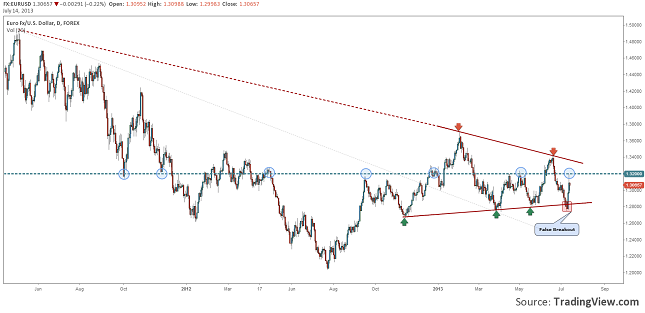As I mentioned in my early statement, Ben Bernanke didn’t manage to really impress the markets neither yesterday nor today. Maybe the only factor that would make a difference is the fact that yesterday the chairman of Fed made it clear that is very flexible in taking decisions while today his attitude may have shift more towards a dovish one, with the promise that even if by the end of next year the QE3 will be ended, the Fed will keep its policy highly accommodative.
The manufacturing in Philadelphia increased considerably at values last met in March 2011, possible marking the start of an upward trend for the American economy. Last month, only 334.000 individuals filled an unemployment insurance, leading the labor market to the greatest shape since May. In an attempt to approach the situation of gold, Ben Bernanke highlighted another positive aspect of the current economic situation, the fact that investors feel safer now and they don’t make safe deposits as much as in the near past. For all that, taking in consideration a more consistent period of time, the data are mixed, so it’s too soon for the Fed to take a firm position concerning the QE3. Along with close supervision of the evolution of the economy, gradual steps will be made and changes of situations can occur.

Connect With Us